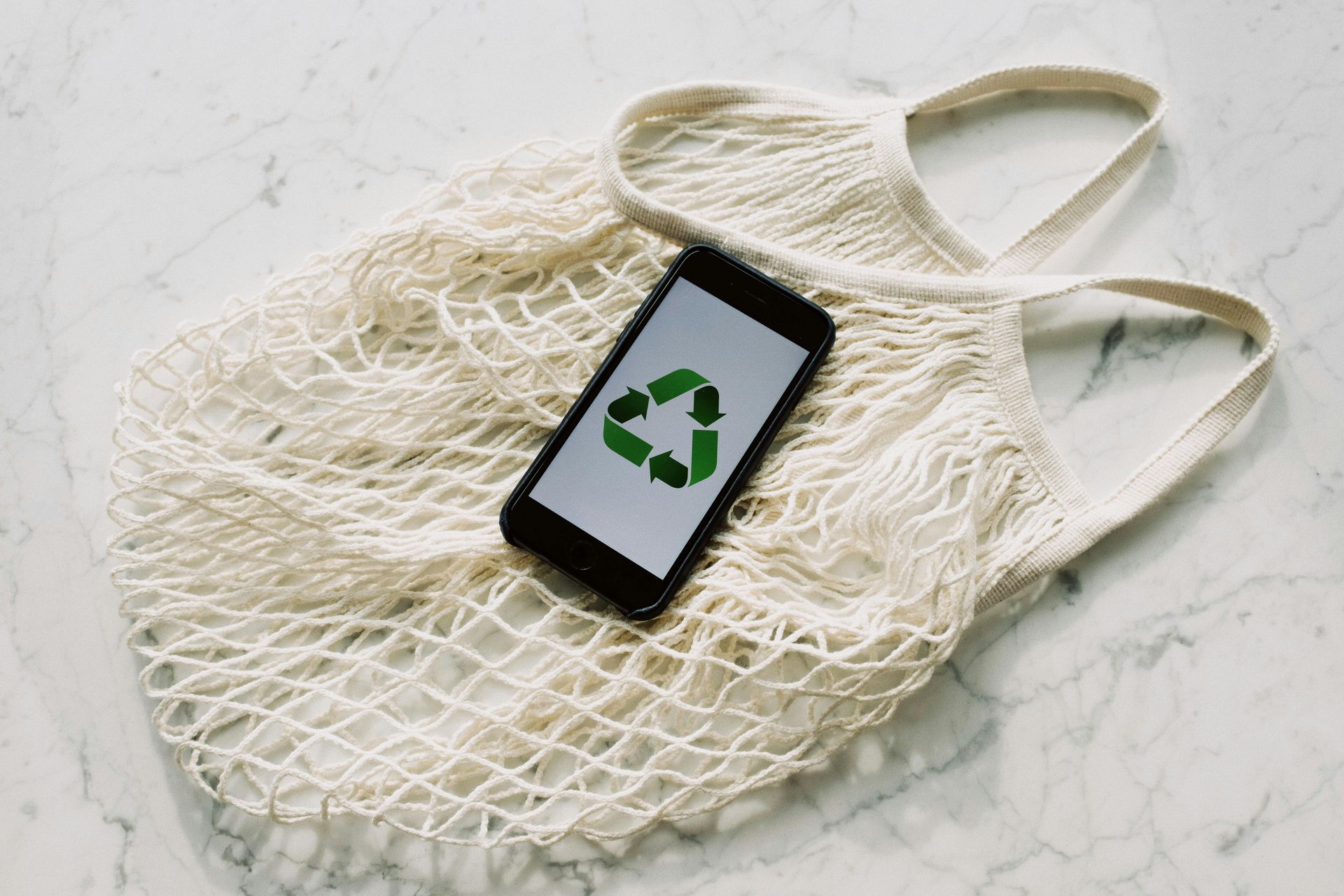The Sustainability of Fiber Optic Technology

As the world becomes increasingly connected, the demand for high-speed internet continues to rise. Yet, alongside this growth comes a responsibility to minimize the environmental impact of our digital infrastructure. From MDUs (Multiple Dwelling Units) to commercial businesses, many are seeking greener alternatives to power their connectivity needs. Fiber optic technology stands out as a sustainable solution that not only delivers superior internet speeds but also reduces energy consumption and carbon emissions. While traditional copper cables have been the standard for decades, fiber optics are proving to be the environmentally friendly choice for the future.
The Energy Efficiency of Fiber Optic Cables
At the heart of fiber optic technology’s sustainability is its energy efficiency. Fiber optics use light to transmit data through strands of glass or plastic, a process that requires significantly less energy than the electrical signals used by traditional copper cables. This difference in data transmission methods translates into lower energy consumption, making fiber optics an ideal choice for property managers and businesses looking to reduce their environmental footprint.
How Fiber Optics Transmit Data: Unlike copper cables, which rely on electrical currents, fiber optics use light pulses to send data. These pulses travel through the core of the fiber at near-light speeds, carrying vast amounts of information over long distances with minimal energy loss. This process is far more efficient than pushing electrical signals through copper, which generates more heat and requires more energy to maintain signal strength, especially over longer distances.
Energy Consumption Comparison: Studies have shown that fiber optic networks can consume up to 75% less energy than copper-based networks when transmitting data over the same distance. This energy savings becomes especially significant in larger MDUs or businesses that manage extensive internal networks or support large numbers of connected devices. By switching to fiber optic technology, these properties can reduce their overall energy usage, leading to both lower electricity bills and a reduced carbon footprint.
Impact on Power Bills: For property managers, the energy efficiency of fiber optics translates directly into financial savings. As MDUs typically cover the cost of common area electricity, reducing the power consumption of internet infrastructure can result in substantial savings over time. Businesses that operate data-heavy applications, like cloud-based services or video conferencing, also benefit from lower power consumption, making fiber optics a cost-effective choice that aligns with sustainability goals.
Reducing the Carbon Footprint of Data Transmission
The reduced energy consumption of fiber optics directly contributes to a lower carbon footprint, making it a key component in the fight against climate change. As data transmission becomes a larger part of our daily lives—especially with the rise of remote work, streaming, and the Internet of Things (IoT)—the need to reduce the environmental impact of internet infrastructure is more critical than ever.
Lower Energy Use, Lower Emissions: The energy used to transmit data is often linked to carbon emissions, particularly when that energy is derived from fossil fuel sources. By using less energy to maintain high-speed data transmission, fiber optics help to lower the carbon emissions associated with internet use. This is particularly important for businesses that are working towards net-zero emissions targets or looking to improve their sustainability credentials.
Supporting Green Data Centers: Data centers, which form the backbone of the internet, are notorious for their high energy consumption. Many modern data centers are now turning to fiber optics to improve their energy efficiency and reduce their environmental impact. Fiber optics allow data centers to operate more efficiently, using less energy to transfer data between servers and to end users. This shift is crucial as more businesses move their operations to the cloud, increasing the demand for data center services. Fiber optics thus play a vital role in supporting the growth of green data centers, which are essential for a sustainable digital future.
The Environmental Impact of Copper vs. Fiber
When comparing fiber optics to traditional copper cables, it’s important to consider the environmental impact throughout the lifecycle of each material—from resource extraction and manufacturing to usage and disposal.
Resource Extraction and Manufacturing: Copper mining is known for its environmental impact, including habitat destruction, water usage, and significant carbon emissions from mining operations. Manufacturing copper cables also requires considerable energy, adding to their environmental footprint before they even reach their end use. Fiber optics, on the other hand, are made from silica, the raw material for glass. Silica is abundant and easier to process with a smaller environmental impact compared to mining and refining copper.
Durability and Lifespan: One of the key advantages of fiber optics is their longer lifespan. Fiber optic cables are more durable than copper and can remain operational for decades without needing to be replaced. This longevity means that fiber optics generate less waste over time, as there is no need for frequent replacements. Copper cables, by contrast, can degrade more quickly and require more frequent upgrades, leading to higher volumes of waste.
Recycling and Disposal: The disposal process for fiber optics is also less environmentally damaging than that for copper cables. While copper can be recycled, the process is energy-intensive and involves melting down the material. Fiber optic cables, though more difficult to recycle due to their glass composition, create less environmental impact over their lifespan because they don’t need to be replaced as often.
Reducing E-Waste and the Role of Fiber Optics in Sustainability
Another critical aspect of fiber optics’ sustainability is their role in reducing electronic waste (e-waste). E-waste is a growing environmental concern, with millions of tons of discarded electronics ending up in landfills each year. By choosing durable, long-lasting technology like fiber optics, MDUs and businesses can play a part in reducing the generation of e-waste.
Lower Maintenance Needs: The reliability of fiber optics means that there is less need for replacing or repairing network components. This not only saves on maintenance costs but also reduces the amount of discarded equipment, such as broken cables and outdated hardware. For MDUs, this can significantly reduce the environmental impact of maintaining a high-speed internet network.
Extended Network Lifespan: Fiber optic networks can support high-speed data transmission for decades, making them a future-proof solution. Unlike copper cables, which often need to be replaced as internet speed requirements increase, fiber optics can continue to meet new standards without needing a complete overhaul. This reduces the frequency of infrastructure upgrades and contributes to a decrease in e-waste over time.
Supporting Circular Economy Goals: By reducing the need for frequent replacements and promoting longer-lasting infrastructure, fiber optics align with the principles of a circular economy. This model emphasizes keeping products and materials in use for as long as possible, minimizing waste and making the most of available resources. Choosing fiber optics helps MDUs and businesses contribute to this sustainable approach.
How Fiber Optics Support Green Building Certifications
The sustainability benefits of fiber optics also extend to green building certifications, such as LEED (Leadership in Energy and Environmental Design). Installing fiber optic infrastructure can play a part in achieving these certifications, which are increasingly valued by eco-conscious tenants and clients.
LEED and Other Certifications: Fiber optics can contribute to points in various categories of green building certifications, including energy efficiency and innovation in design. For MDUs and commercial properties aiming for LEED or similar certifications, installing fiber optic internet can be a strategic way to enhance their environmental profile.
Attracting Eco-Conscious Tenants and Clients: Properties and businesses that invest in sustainable technology like fiber optics can attract tenants and clients who prioritize environmental responsibility. With more consumers looking to support businesses that align with their values, offering energy-efficient internet becomes a valuable selling point.
Planning a Sustainable Upgrade to Fiber Optics
For those looking to enhance their sustainability efforts, upgrading to fiber optics is a clear step in the right direction. Here’s how to make the transition as effective as possible:
Assessing the Environmental Benefits: Consider the potential energy savings and environmental impact reduction that a fiber optic upgrade can bring. This includes calculating potential reductions in energy consumption and comparing them to the costs of installation.
Working with Eco-Friendly Providers: Choose a provider that prioritizes sustainability in their installation and service practices. This ensures that the entire process, from installation to maintenance, aligns with your environmental goals.
Maximizing the Long-Term Impact: Integrating fiber optics with other green technologies, such as renewable energy sources or energy-efficient building management systems, can maximize the environmental benefits. For example, pairing fiber optics with solar power can further reduce a building’s carbon footprint.
Final Thoughts
The transition to a more sustainable future requires thoughtful decisions about the technology we use every day. Fiber optic cables provide a powerful solution for MDUs and businesses seeking high-speed, reliable internet that doesn’t compromise the environment. With their energy efficiency, lower carbon footprint, and contribution to reducing e-waste, fiber optics are more than just a smart choice for today—they are a responsible choice for tomorrow.
If you’re ready to enhance your property’s sustainability while enjoying the benefits of superior connectivity, Velofi is here to help. Our tailored fiber optic solutions deliver the speed and reliability you need while supporting your commitment to a greener future. Contact Velofi today to learn how fiber optics can transform your connectivity and help you achieve your sustainability goals.
